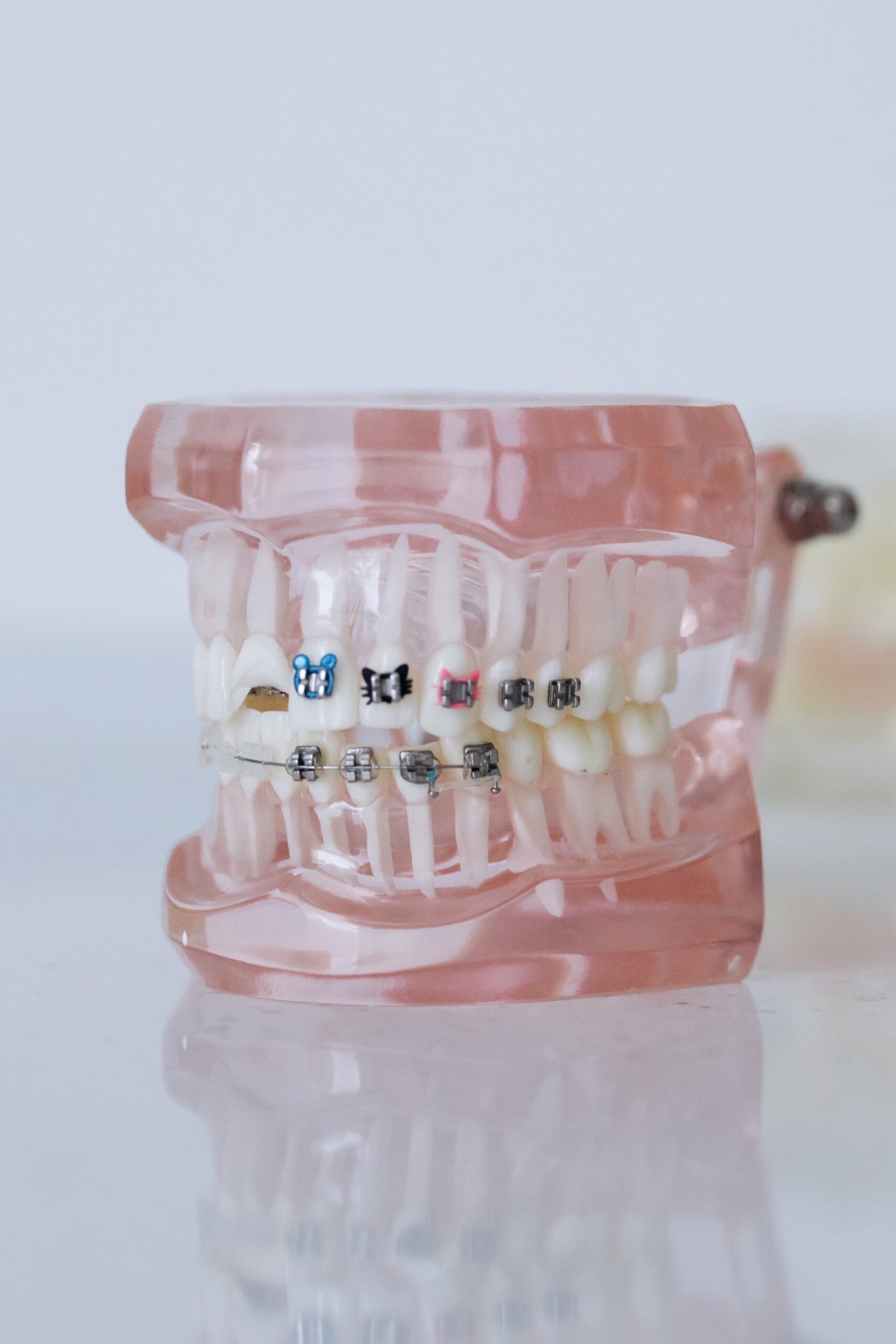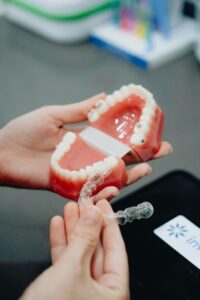
I. Understand the Basics
Brief History of Orthodontics
Orthodontics, the branch of dentistry concerned with correcting teeth and jaw alignment, has seen considerable evolution. Traditional braces date back to the 18th century, and since then have seen significant updates in terms of materials used and design. On the other hand, invisible aligners entered the dental scene in the early 2000s, bringing forth a revolutionary change in aesthetics and comfort levels.
Defining Traditional Braces
Traditional braces are dental devices used to correct misaligned teeth and jaws. The components include brackets that are placed on each tooth, rubber bands or ties to link these brackets, and an archwire that applies pressure to gradually move the teeth in the desired direction. Various types of braces, such as metal, ceramic, lingual, and self-ligating braces, are available to cater to individual preferences and needs. Typically, traditional braces are recommended for patients with complex or severe misalignment and crooked teeth.
What are Invisible Aligners?
Unlike traditional braces, invisible aligners are clear trays made from BPA-free plastic which are custom designed to snugly fit a patient’s teeth. They gradually move your teeth to the desired position by applying consistent, controlled force. Popular brands include Invisalign and ClearCorrect. They are generally recommended for mild to moderate teeth correction and adults or teens conscious about the aesthetics of their smile.
II. Comparing Techniques: Braces Vs. Aligners
Installation Process
Traditional braces require a multi-step process including cleaning, conditioning, bracket application and finally archwire insertion through the brackets. In contrast, invisible aligners begin with a digital scan or impression of the teeth, followed by a computer algorithm mapping out the gradual process of realignment. A set of custom aligners are then created for the patient to use.
Duration and Frequency of Wearing
The duration of orthodontic treatment, whether with traditional braces or aligners, varies based on individual cases and the complexity of the orthodontic issues. Traditional braces are typically worn 24/7 for a period of 1 to 2 years, but this timeframe can extend or shorten depending on the specific needs of the patient. On the other hand, aligners, like those used in Invisalign treatment, require consistent wear of at least 22 hours a day. The typical duration for aligner treatment ranges from 6 to 18 months. However, similar to traditional braces, the actual duration can be influenced by factors such as the severity of misalignment and the patient’s adherence to wearing the aligners as instructed.
Maintenance and Hygiene
Cleaning traditional braces can indeed be challenging due to their structure, involving brackets and wires that can trap food particles. Effective maintenance requires regular brushing around the brackets and using special flossing tools, such as floss threaders or interdental brushes, to reach between wires and under the braces. Conversely, cleaning invisible aligners, like those used in Invisalign treatment, is comparatively simpler. Aligners are designed to be removable, allowing users to take them out for meals and oral hygiene routines. This makes brushing and flossing more convenient as there are no brackets or wires to navigate around. Aligner users can maintain their regular oral hygiene practices, and cleaning the aligners themselves is usually straightforward with the use of a soft toothbrush and mild cleanser.
III. Evaluating the Pros and Cons
Benefits and Drawbacks of Traditional Braces
Traditional braces have a well-established reputation for effectively treating severe dental problems. They are particularly successful in addressing complex orthodontic issues. However, a major drawback is their visibility, which can cause discomfort for some individuals who may feel self-conscious about the appearance of metal brackets and wires. Additionally, traditional braces may come with dietary restrictions, as certain foods can damage the braces or get stuck, requiring extra care and caution.
Advantages and Disadvantages of Invisible Aligners
Invisible aligners shine in the aesthetics department, offering a more discreet option for orthodontic treatment. They are considerably more comfortable as they lack the wires and brackets associated with traditional braces. However, invisible aligners may not be suitable for addressing advanced orthodontic issues that require more complex tooth movement. Another consideration is the need for patient discipline, as aligners must be worn almost all the time for the treatment to be effective. Compliance with wearing the aligners as prescribed is crucial for achieving the desired results.
IV. Deciding Factors: Making the Right Choice
Factors Influencing the Decision
When deciding between traditional braces and invisible aligners, several key factors come into play. The severity of dental issues is a crucial consideration, with traditional braces often being more effective for severe cases, while invisible aligners are suitable for simpler corrections. Cost is another significant factor, and generally, traditional braces are often more budget-friendly compared to invisible aligners. Age is also a factor, as younger patients might not qualify for invisible aligners based on their specific dental needs.
Considerations for Comfort and Lifestyle
The impact on comfort and lifestyle is a vital aspect of the decision-making process. Both options can influence speaking and eating habits, with traditional braces potentially requiring adjustments. The visible nature of traditional braces may also have social implications, especially for individuals who are concerned about the appearance of metal brackets and wires. Considering these factors is essential to ensure that the chosen orthodontic solution aligns seamlessly with an individual’s comfort and lifestyle preferences.
Role of Dental Professionals
Despite all considerations, the single decisive factor should always be professional advice. An experienced orthodontist can effectively analyze the patient’s needs and guide them to make the best-informed decision that aligns with their dental requirements and lifestyle aspects.
In summary, the choice between traditional braces and invisible aligners involves weighing their respective strengths and weaknesses. It’s not a matter of one being superior to the other, but rather determining which option aligns better with an individual’s specific dental needs and personal preferences. As technology advances, the field of orthodontics will likely see continuous improvements in both braces and aligners. This ongoing evolution holds the promise of making teeth-straightening procedures more efficient, comfortable, and visually appealing than ever before. Ultimately, the decision should be based on a collaborative discussion between individuals and their orthodontic professionals to find the most suitable solution for their unique circumstances.
Our Reading dental clinic is committed to providing you with a beautiful smile every time you visit us. Whether you need orthodontic treatment or any other dental services, our team of highly trained dentists is here to provide you with the highest quality care. Our aim at Smiles in Reading is to give you a smile that is both comfortable and respectful. With online appointment scheduling, you can now receive dental care of the highest quality. Our dental professionals are here to help you enhance your smile and teeth.


